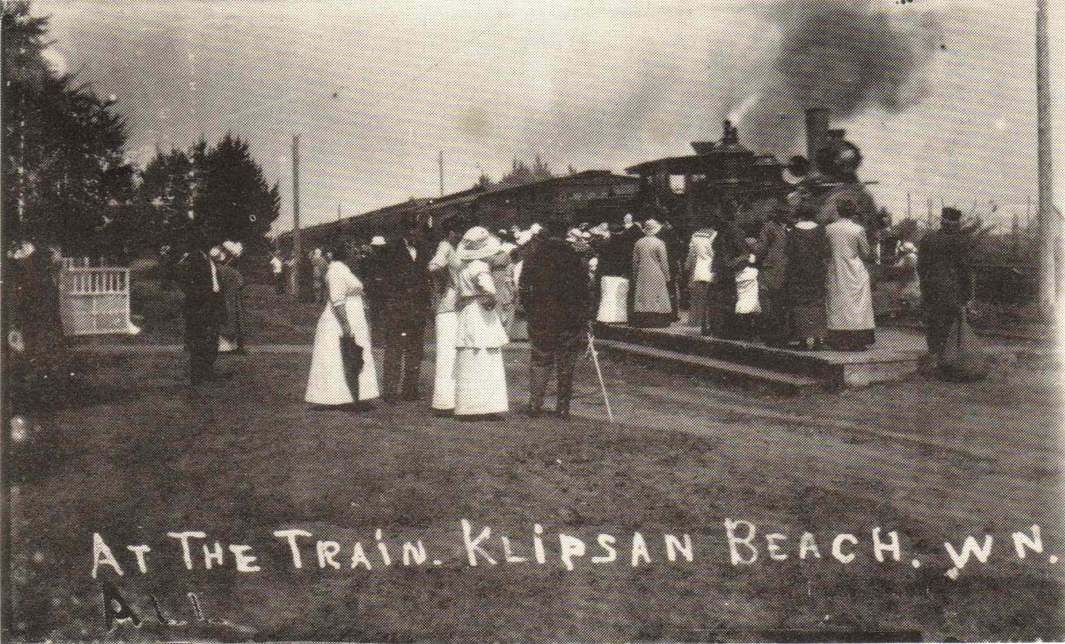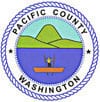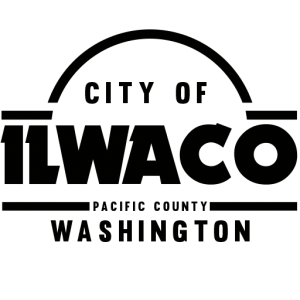On July 14-15, the Columbia Pacific Heritage Museum in downtown Ilwaco invites you to step back in time for Clamshell Railroad Days! This event celebrates the narrow gauge railroad that was once the lifeblood and a hub of activity for the Long Beach Peninsula. The museum will be opening up the beautiful NAHCOTTA wooden passenger coach for tours. Don’t miss this special occasion. The NAHCOTTA will not be open again until the Cranberrian Fair in October. Learn more about what the museum has planned here.
Ilwaco Railroad & Navigation Company (IR&N)
“The Railroad that Ran with the Tide”
“The Irregular Rambling and Never-Get-There Railroad”
For 41 years a beloved narrow-gauge railroad made thousands of journeys from one end of this peninsula to the other. The passengers were local residents going to “town” to shop, summer visitors coming to enjoy a vacation by the sea, and even students traveling to high school in Ilwaco. Freight hauling was important too, and the bounty of farm, forest, beach, and bay started its trip to distant markets on the little railroad.
Like many other small railroads across the country, the Clamshell Railroad struggled to survive as automobiles and trucking lines became more dominant forms of transportation. The old tracks were pulled up and sold long ago but train buffs, history fans, and curious visitors all enjoy retracing the route of the vintage train and recapturing a little piece of our past.
Be sure to visit the Columbia Pacific Heritage Museum in Ilwaco where you can see train artifacts, the Freight Depot and an original passenger car the Nahcotta.
Clamshell Railroad Driving Tour
1. DISMAL NITCH – Hwy.101, one mile east of the bridge over the Columbia River
East of the present-day rest area, the Megler terminal had a dual-tracked wharf that extended several hundred feet out on the river. This newer part of the rail line was completed in 1908, twenty years after the railroad started, to provide a deepwater terminus for the line. Steamers from Portland and Astoria could schedule regular trips and the IR&N was no longer a “railroad that ran by the tide.”
2. STATION CAMP – (3 mi.) east end of St. Mary’s church on Hwy. 101
This stop was called McGowan, site of a Chinook Indian Middle Village, base camp for Lewis and Clark, and later an early cannery owned by the McGowan family. The highway enters a tunnel just beyond this stop that was originally blasted out for the railroad.
3. FORT COLUMBIA – (3.7 mi.) left at the end of the tunnel on Hwy. 101
This depot was used by the U.S. Army to transport supplies and personnel to the active fort situated on top of the hill. The rails veered to the right here and went behind the town of Chinook.
4. CHINOOK – (5.5 mi.) turn right at the fire station and stay on Chinook Valley Rd.
The depot was approximately one block off the highway. Chinook Valley Rd. is built, in part, on the roadbed of the old line. Turn right at the stop sign to remain on the rail line. Two small stops were located along this section – Ellis (9.5 mi.) and Wallicutt (10.5 mi.). The road loops back to Hwy. 101 (11.0 mi.); turn right and follow the signs to Ilwaco.
5. ILWACO – (14 mi.) the depot was on the NW corner of First and Spruce streets.
Construction of the railroad began here in1888 from the wharf that first served the stagecoach line. The shallow water in the bay meant that steamships could only dock at high tide, changing the railroad timetable every day. This situation was remedied when the new line was built to Megler. Railroad headquarters remained in Ilwaco. The original freight depot and a restored passenger car can be seen at the Columbia Pacific Heritage Museum, 115 SE Lake.
6. BLACK LAKE – (14.5 mi.) North on Hwy.101, 1/2-mile from downtown Ilwaco. The new spur from Megler joined the original rail line on the north side of Black Lake. Trains traveling north and south would stop at the wye junction and BACK into the town of Ilwaco to pick up passengers and freight.
7. HOLMAN – (15.3 mi.) turn west off Hwy. 101 at 30th. Proceed one block to “L” street
This small stop was important for the water tower located here.
8. SEAVIEW – (15.8 mi.) continue on “L” street to 38th. The depot is on the SE corner
This is the only depot still in its original location. It is currently the home of The Depot Restaurant, which celebrates its history by maintaining the structure and filling the interior with railroad murals and memorabilia. Continue north on “L” and note the railroad crossing sign on the southwest corner at 41st. Turn right on 45th, the railroad made a diagonal jog to the present day highway here. There was a platform for guests of the Shelburne Hotel; this historic inn is still in operation. Turn left on Pacific Highway. You can see a restored railcar used as a residence/business on the east side of the highway at 49th.
9. LONG BEACH – (17 mi.) drive to the second signal (Bolstad) and continue north
The original depot was located between Bolstad and N. 2nd street. The town preserved the second depot structure and eventually moved it to its present location on 3rd street where it can be seen on the west side of the highway. There is a small park here.
TIOGA – west on 14th
BREAKERS – west on 26th
These two platforms were built to accommodate guests who came to the large resort hotels located here in early days. There are no visible remains of these stops.
10. CRANBERRY – (20.7 mi.) Hwy. 103 and Cranberry Rd.
As its name implies, this stop was built to ship out the cranberries picked from nearby bogs and other farm products. From this point north, the railroad paralleled the highway, about 500 feet to the west.
11. LOOMIS – (22.5 mi.) west at 181st – watch for State Park sign. ?
Large parking lot, restrooms
Lewis A. Loomis’s mansion was located approximately 3 blocks to the south of this park. A stop was made here as a courtesy to the founder of the railroad.
12. KLIPSAN LIFESAVING STATION (24.5 mi.) west on 225th Beach access sign
The station was moved here from Ilwaco in 1889 to put the rescuers at a more central location on the peninsula. The train would often haul the lifeguards and their boats to the scene of a maritime disaster on the beach dubbed, over time, the “Graveyard of the Pacific.” Temporary train stops were added so sightseers could view the wrecked ships.
13. OCEAN PARK – (26 mi.) turn east off the highway at “P” street, about 236th
The train tracks paralleled this curving street, eventually heading straight into town on Ridge street. “P” street rejoins the highway at 249th. Turn north and then take a right on 253rd. (This is the first place you can get back on Ridge without interruptions) turn left on Ridge. The depot was located on the SW corner of Ridge and Bay Ave. (present-day Jack’s Country Store). The line continued north on Ridge and began its arcing turn around 268th. You will have to stay on Ridge and turn right on 270th. This street follows the line of the original tracks.
14. NAHCOTTA – (27 mi.) the line terminated east of 270th and Sandridge Rd.
From this northern terminus of the line, passengers and freight were transferred to steamers for the trip to South Bend. Remains of the wharf piling can still be seen at low tide. A roundhouse, machine shops, and car barns were located here. A large mural on the side of the building at this location tells the story of the railroad’s erratic timetable.
Clamshell Railroad Timeline
- 1870s Stagecoaches carry passengers and freight on the beach.
- 1874 L.A. Loomis builds a wharf at Ilwaco to aid loading steamboats.
- 1882 Loomis starts to raise funds for a railroad – the Ilwaco Railroad and Navigation Co. – IR&N.
- 1888 Construction begins and 3.5 miles of track are completed – from Ilwaco to Long Beach.
- 1889 Line is finished and regular service starts from Ilwaco to Nahcotta. It takes three hours to make the trip.
- 1900 The Oregon Railroad and Navigation Co. (OR&N) purchases the railway. Upgrades are made to the line.
- 1906 Construction begins to extend the railway to deeper water on the Columbia River.
- 1908 The new tracks are laid and the first train travels from Megler to Nahcotta.
- Early 1900s Thousands of passengers, many domestic animals, 70 lb. bags of oysters, cranberries and just about every other commodity are transported on the railway line.
- 1920s Automobiles become increasingly popular and state highways extend to the Peninsula.
- 1930 Last train runs on Sept. 9. Engines, cars, and tracks are sold.
Lewis Alfred Loomis was born in New York on October 9, 1830. He came West at the age of 22, first to California and then to Pacific County to visit his brother, Edwin, in 1855. Life experiences took him other places, even back to New York, but eventually, he returned to the peninsula and in 1872 purchased the acreage that would become “Loomis Station.” With local investors, he formed The Ilwaco Wharf Company and with his brother Edwin, he started the first stage line running from Ilwaco to Oysterville carrying freight, passengers, and the U.S. Mail.
As the need for more services became evident, Loomis expanded his vision, took on more partners, and added new and better options for travel and shipping eventually culminating in the Ilwaco Railroad & Navigation Co. He laid the first track in 1888 and the completed line eventually ran from Megler to Nahcotta. With steamer ships added for connections via water, the operation filled a great need in the community for over 40 years. With the coming of the automobile, the train became less of a necessity and the final run of the little narrow gauge railroad was on September 9, 1930.
Mr. Loomis was an entrepreneur who had great vision and drive and enjoyed the benefits of his enterprises living in a luxurious mansion overlooking the ocean. He died there on July 19, 1913 and is buried in the historic Oysterville Cemetery.
The railroad was acquired by a larger company (OR&N) in 1903 and a new superintendent was dispatched to inspect the line. He wasn’t very impressed with the small holding and muttered “Hmph! Clamshell railroad” as he left. No shells were used in the roadbed — but the nickname stuck!
WE HOPE YOU ENJOYED YOUR TRIP INTO THE PAST ON THE CLAMSHELL RAILROAD!
Visit the Columbia Pacific Heritage Museum for more information.
This page is © 2009 Columbia Pacific Heritage Museum. All Rights Reserved. Photos courtesy of Columbia Pacific Heritage Museum and Pacific County Historical Society






